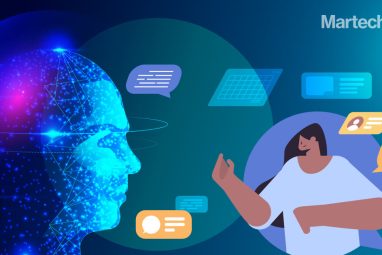Generative AI And The Evolving Landscape For Marketers
Generative AI presents significant advantages for content marketing, such as personalised content creation and optimisation for search engines and social media platforms. Despite its benefits, marketers should be aware of the technology’s limitations for content marketing.
Topics

At the 2023 New York International Auto Show a few months ago, Lexus – Toyota Motor’s luxury vehicle brand, allowed visitors to use AI technology to bring their dream Lexus cars – the 2023 Lexus RX and 2023 Lexus RZ 450e to life.
By simply typing in a prompt, they can place either vehicle in any setting imaginable, limited only by creativity. The result is a truly customised vision of their dream ride.
Lexus Marketing’s Vice President Vinay Shahani said, “Lexus is focused on creating innovative ways to connect with our guests, and this time, we’re using Generative AI technology at the New York International Auto Show to engage with them in a unique and very personalised way.”
Generative AI is becoming critical for marketing teams as it offers personalised content at scale and optimisation for search engines and social media platforms. It has made significant strides in recent years, and various use cases exist for its application in content marketing.
Beyond content, Generative AI can generate different types of digital content, including text, images, and audio.
Working behind text-to-image translation
Text-to-image translation converts textual descriptions into visual representations. The process involves several steps, including:
Preprocessing: The first step in text-to-image translation involves preprocessing the text input. This may involve removing stop words, stemming, and tokenisation, which breaks down the text into smaller units for analysis.
Encoding: Once the text input has been preprocessed, it is encoded into a numerical representation using techniques like word embeddings. This process converts the text into a series of numerical vectors, which can be fed into a neural network for further analysis.
Neural network: The next step in text-to-image translation involves feeding the encoded text input into a neural network. The neural network is typically a generative adversarial network (GAN), which consists of two separate networks – a generator and a discriminator.
Generator: The generator creates the image output based on the encoded text input. It takes in the encoded text input and generates a series of output vectors to create the final image.
Discriminator: The discriminator is responsible for evaluating the quality of the generated image. It takes in both the generated and a real image and tries to determine which is real and which is fake.
Training: During training, the generator and discriminator networks are trained together. The generator learns to create more realistic images based on the feedback it receives from the discriminator. The discriminator, in turn, learns to better distinguish between real and fake images.
Testing: Once the neural network has been trained, it can be used to generate images based on new text inputs. The user inputs a text prompt, encoded and fed into the generator network. The generator then creates an output image based on the text input.
Text-to-image translation offers several benefits for marketing teams. The AI model can generate images automatically from textual descriptions, saving marketers significant time and effort. It helps in lowering costs by eliminating the need for human intervention.
Additionally, text-to-image translation can increase creativity by enabling marketers to explore a broader range of visual concepts and ideas and to test which visuals resonate best with their target audience.
The technology has the potential to transform the way marketing teams create visual content, allowing them to produce high-quality visuals at scale and a lower cost than traditional methods.
Time for marketers to adapt
As generative AI advances rapidly, marketers must adapt to a new role that involves working closely with AI systems and leveraging their capabilities to enhance marketing strategies. Here are some skills that marketers can learn:
Data Analysis: Marketers should become proficient in data analysis to understand better how AI systems work and how to leverage their capabilities. This includes learning to collect, clean, and analyse data to improve marketing strategies and optimise AI models.
AI Understanding: To work effectively with AI systems, marketers should develop a basic understanding of AI principles and techniques. This includes learning about machine learning algorithms, natural language processing, and neural networks.
Creativity: Despite the power of AI systems, marketers still need to bring their creativity to the table. Learning how to generate novel ideas and concepts that can be translated into successful marketing campaigns is a critical skill for any marketer working with AI.
Communication: Marketers must communicate effectively with technical and non-technical stakeholders to ensure that AI systems are being used to their full potential. This includes understanding technical jargon and translating technical concepts to non-technical team members.
Collaboration: Marketers should be able to work collaboratively with data scientists and other technical experts to build effective AI models and implement them into marketing strategies. This requires a willingness to learn from other experts and work together to achieve common goals.
By leveraging these skills, marketers can work effectively with AI systems to enhance marketing strategies and drive business success.
However, certain things must be considered when utilising Generative AI for content marketing.
Look out for limitations
By automating repetitive tasks, marketers can focus on more strategic activities, such as developing new marketing campaigns or analysing customer data. However, the space faces certain limitations when it comes to content marketing;
- Lack of creativity: While Generative AI can produce grammatically correct and coherent text, it lacks creativity and cannot replicate the nuances of human thought processes. This can lead to repetitive and formulaic content, which may resonate poorly with audiences.
- Limited understanding of context: Generative AI may not understand the context in which content is produced. This can lead to inaccurate or irrelevant content that may not meet the intended goals of the marketing campaign.
- Inability to incorporate human emotion: Content marketing often seeks to evoke specific emotions in its audience. Generative AI may not be able to replicate human emotions or create content that resonates emotionally with the target audience.
- Quality control: While Generative AI can produce large volumes of content quickly, it may not always meet the quality standards required for effective content marketing. Human oversight is still necessary to ensure that the content produced is of a high standard and aligned with the brand’s messaging.
- Ethical concerns: There are also ethical concerns associated with using Generative AI in content marketing. The technology may produce deliberately misleading or manipulative content, damaging a brand’s reputation.
Simply put, it can be a useful tool for content marketing, but it is not a substitute for human creativity, emotional intelligence, and critical thinking. Marketers should use it thoughtfully and carefully, considering its limitations and potential ethical implications.
Recent improvements in comprehensive language models like ChatGPT have made Generative AI even more powerful and beneficial commercially.
How can you use Generative AI to enhance your business efforts?
Find out at Martechvibe’s flagship marketing technology summit, Vibe Martech Fest, happening on 1-2 August 2023 at Four Seasons Hotel, Jakarta. The conference will focus on technology trends supporting marketers in evolving with the digital economy.
For more information and registration, visit Vibe Martech Fest – Jakarta





